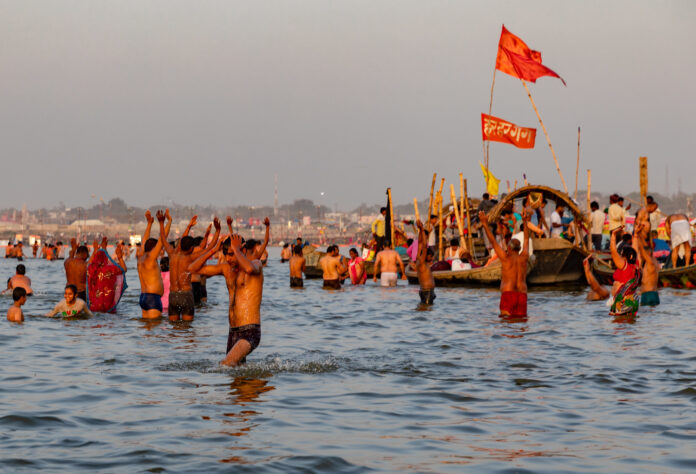Antiche discriminazioni sociali continuano a sopravvivere in India, convivendo con pratiche scientifiche evolute ma non popolari
In India, nella città di Trichy nella regione del Tamil Nadu, esiste uno strano cimitero cristiano. Osservandolo con un drone dall’alto si vede nettamente spiccare sul terriccio rossastro un muro bianco che lo taglia in due. Da una parte e dall’altra le fosse.
Viene da pensare che la separazione indichi che da una parte sono sepolti i cristiani e dall’altra gli indù, oppure gli islamici, oppure i non indiani. Nulla di tutto ciò: da una parte sono sepolti coloro che appartenevano alle caste superiori. L’altra è invece riservata ai Dalit, gli intoccabili, coloro che occupano l’ultimo gradino della gerarchia sociale.
Anche se un Dalit si converte al cristianesimo – cosa molto frequente – resta sempre un Dalit e va sepolto con gli altri Dalit. È incredibile che in un Paese in cui si fabbricano microprocessori sofisticatissimi, in cui si progettano imprese spaziali, il pregiudizio castale sopravvive e viene rispettato rigorosamente.
La costituzione indiana ha abolito le caste e la Chiesa cattolica ha ripetutamente condannato questa assurda discriminazione. Ma ambedue si sono scontrate con un fanatico rispetto per una tradizione ancestrale che neanche Gandhi era riuscito a scalfire. Le caste non si toccano.
Credo religioso VS scienza medica
Ci si può stupire quindi se milioni di indiani non hanno rinunciato all’importante pellegrinaggio del Kumbha Mela, che prevede il rituale bagno purificatore nel Gange?
Le autorità mediche si sono affannate a spiegare che gli assembramenti avrebbero favorito enormemente i contagi, ma hanno ottenuto solo che il periodo del pellegrinaggio fosse limitato al mese di Aprile, che i partecipanti si sottoponessero a un test di negatività al Covid e non superassero il limite di tre milioni di persone (!).
Inutili precauzioni: già il 14 si contavano mille nuovi positivi fra i devoti e se ne prevedono molti di più nelle prossime settimane. Anche il governatore dell’Huttar Pradesh, il monaco Yogi Adityanath ha fatto sapere di essere stato contagiato.
Vale la pena ricordare che il 25% della popolazione indiana è analfabeta e che la scienza nel Paese gode di una credibilità decisamente inferiore rispetto alle pratiche religiose. Le autorità invitano a cerimonie di preghiera e vi partecipano esse stesse per riscuotere credibilità nei confronti della popolazione.
L’India è il più grande produttore di vaccini del mondo – esportati in buona parte in Occidente – ma alcuni centri vaccinali del Paese potrebbero chiudere per mancanza di dosi.
India, Purification Bath in the Ganges and Major Infections
Ancient social discrimination continues to survive in India, living with advanced but not popular scientific practices
In India, in the city of Tichy in the region of Tamil Nadu, there is a strange Christian cemetery. Looking at it with a drone from above a white wall that cuts it in two can be clearly seen standing out on the reddish soil. On both sides are graves.
One would think that the separation indicates that Christians are buried on the one hand and Hindus on the other, or the Islamists, or non-Indians. It is none of these: on one side are buried those who belonged to the upper castes. The other side is for the Dalit, the untouchables, those who occupy the last step of the social hierarchy.
Even if a Dalit had converted to Christianity – which is very frequent – they always remain a Dalit and must be buried with the other Dalits. It is incredible that in a country where very sophisticated microprocessors are manufactured, in which space enterprises are planned, castal prejudice survives and is strictly respected.
India’s constitution abolished castes and the Catholic Church has repeatedly condemned this absurd discrimination. But both have clashed with a fanatical respect for an ancestral tradition that not even Gandhi had managed to scratch.
Religious belief vs medical science
Can we be surprised then that millions of Indians have not given up on the important pilgrimage of the Kumbha Mela, which includes the ritual purifying bath in the Ganges?
The medical authorities went to great lengths to explain that the gatherings would greatly increase the infections, but they only obtained that the pilgrimage period was limited to the month of April, that participants undergo a Covid negativity test and did not exceed the limit of three million people (!).
Useless precautions: already on the 14th there were a thousand new positives among the devotees and many more are expected in the coming weeks. Even the governor of Huttar Pradesh, the monk Yogi Adityanath made it known that he had been infected.
It’s worth remembering that 25% of India’s population is illiterate and that science in the country enjoys far less credibility than religious practices. The authorities invite to prayer ceremonies and they participate in it themselves to gain credibility with the population.
India is the largest producer of the vaccine in the world, exporting most of it to the west, but some vaccination centers in the country may close due to lack of doses.








